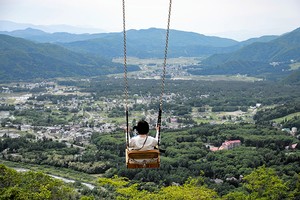By TOMOE ISHIKAWA/ Staff Writer
June 28, 2021 at 15:25 JST
 Employees at a care facility for elderly people in Tochigi Prefecture take a test for the novel coronavirus in February. (Asahi Shimbun file photo)
Employees at a care facility for elderly people in Tochigi Prefecture take a test for the novel coronavirus in February. (Asahi Shimbun file photo)
The central government’s bid to ramp up COVID-19 testing on caregivers and staff at eldercare facilities to prevent infection clusters has faced delays from some reluctant facilities worried that more rigorous testing could cause staff shortages.
The health ministry has urged local governments to conduct regular PCR tests focusing on workers at eldercare facilities, a key coronavirus battleground where most clusters are occurring.
Testing has been stepped up, but slowly, with some areas running tests less frequently and many smaller facilities expressing reluctance out of fears positive results could strain their operations.
“Small facilities like ours do not have many workers, so it will be difficult to operate the facility if someone tests positive,” said the head of a Tokyo facility.
Infections have spread at eldercare facilities like wildfire, government figures show.
According to data collected by the health ministry, 1,711 infection clusters had broken out at elderly care facilities nationwide, as of June 21. That number was the largest among the categories, exceeding those from restaurants and bars and health care facilities.
In early May, it was revealed that 38 residents died at elderly care facilities in Kadoma, Osaka Prefecture, and Kobe.
Focusing testing on workers at such facilities is a measure aimed at discovering asymptomatic COVID-19 patients quicker to prevent infection clusters from occurring.
The ministry’s guidelines request that facilities located in areas under a state of emergency or pre-emergency measures test their workers once a week, or at least once every two weeks.
But the frequency of testing varies by municipality.
During the period from February to March this year, the ministry announced a policy to conduct caregiver-focused testing at facilities in 10 prefectures under the state of emergency.
But only about 15,000 facilities actually did the testing, about half of the ministry’s target.
In response, the ministry issued a request to facilities in late March to conduct focused testing more actively between April and June.
The ministry expanded the number of target facilities to 76,656, including those taking care of disabled people.
As of June 2, 47,400 facilities, or 62 percent, requested the testing.
The ministry said many facilities reported that they would not conduct the testing due to concerns it would leave them short of workers.
Many larger facilities have done the testing, while smaller facilities have tended to express concerns about staff testing positive if they run the tests, the ministry said.
“I feel nervous when I conduct tests,” the head of the Tokyo care facility said. “I feel uneasy about whether the facility can stay in operation if someone tests positive for the virus. There are staff who are stressed about the testing.”
The facility nonetheless complied with the ministry’s request and tested its staff, but voiced concerns that the burden of testing has increased.
An infection cluster broke out at that facility last year, but staff who did not contract the virus had managed to keep the facility running.
Yasuhiro Yuki, a social welfare professor at Shukutoku University, said that small facilities do not have close ties with other facilities, and it is difficult for them to bolster their workforce amid a labor crunch if someone tests positive.
“There should be a measure for securing manpower (for these small facilities), such as appropriating a budget to dispatch caretakers to a facility that has a COVID-19 case,” he said.




















A peek through the music industry’s curtain at the producers who harnessed social media to help their idols go global.
A series based on diplomatic documents declassified by Japan’s Foreign Ministry
Here is a collection of first-hand accounts by “hibakusha” atomic bomb survivors.
Cooking experts, chefs and others involved in the field of food introduce their special recipes intertwined with their paths in life.
A series about Japanese-Americans and their memories of World War II